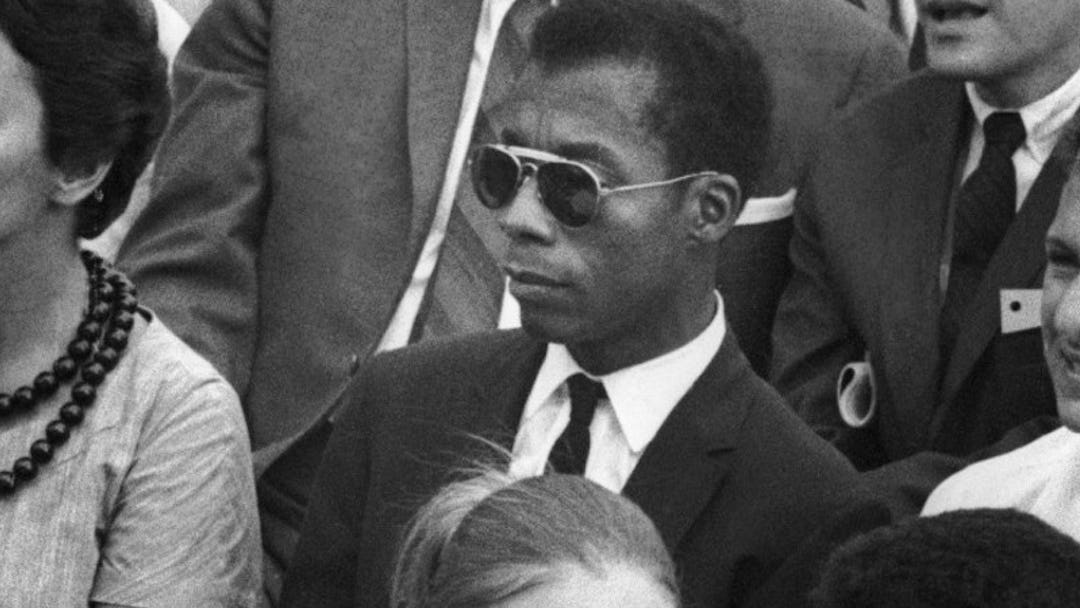“I’m terrified of the moral apathy, the death of the heart, which is happening in my country.” James Baldwin said those words in 1963, but they could’ve been said today, or tomorrow, or (particularly) on November 9th. And it’s the timelessness of his words and ideas, even more than the construction (which is excellent), editing (also excellent), and performance (ditto), that make I Am Not Your Negro such an essential film – the most urgent movie of 2016, which seems a strange thing to say about a movie written in the 1980s, predominately about the 1960s. But here we are.
Director Raoul Peck takes as his starting point Remember This House, a memoir Baldwin was working on for roughly the last decade of his life, which told the story of America – and particularly black people in America – though the biographies of Martin Luther King Jr., Malcolm X, and Medgar Evers. “I want these three lives to bang up against each other,” he wrote of the book, which never made it past 30 pages of notes and passages. Peck takes those notes, and the spirit of Baldwin’s style – often unfurling his thoughts and insights in the form of exploratory, book-length discussions – to make a free-flowing essay film. It’s about the black experience, and the American experience, and most of all, how they’re inextricably intertwined.
“The story of the Negro in America is the story of America,” he wrote. “It is not a pretty story.” The words are read by Samuel L. Jackson, summoning all of his considerable heft and heart to do those words justice (he is never seen, and yet I would place this among the finest acting he’s ever done). He walks through Baldwin’s memos and prose, the work he knows he must do, the journey he must undertake. Baldwin did not live long enough to finish that journey, but in his own remarkable way, Peck finishes it for him, taking this incomplete work and making it whole – illustrating his words, drawing lines that connect those words not only to our era, but to those well before Baldwin’s.
His voice remains vital, piercing, insightful; these words have no rust or dust on them, nothing that dates them to “his time,” because his time is our time, and it was ever thus. In his presentation of those words, Peck renders them vibrant anew; he traverses decades and centuries in his cuts and juxtapositions, and puts in any piece of film or sound that’s remotely relevant (old movies, modern news, advertisements, folk songs, contemporary music, educational shorts), because it’s all relevant, all common currency. When Baldwin talks about returning to New York from his exile in Europe, Peck does not use footage of New York from the period (though there’s plenty of it, and even some used elsewhere); he shows us images of the Times Square of today, because this is not history. This is commentary. And when he tells us, “I know you how watch as you grow older – it’s not a figure of speech – the corpses of your brothers and sisters grow up around you, and not for anything they have done, they were too young to have done anything,” the faces he shows of those brothers and sisters, Trayvon Martin and Christopher McCray and Cameron Tillman and Tamir Rice and Darius Simmons and Aiyana Stanley-Jones, remind us that, in his words, “History is not the past. It is the present. We carry our history with us.”
That history is a work-in-progress, an idea underscored throughout Peck’s remarkable film. It’s valuable enough that he uses the tools of the documentarian to present historical events and figures, and then follows those images with Baldwin’s deconstruction of them; in doing so, he’s giving us the gift, albeit briefly, of seeing the world the way Baldwin did. But he’ll often take those pairings a step further. We see Robert F. Kennedy noting “there is no reason that in the near, the forseeable future,” we could see a black President. Peck then cuts to Baldwin’s response: “From the point of view of the man in the Harlem barbershop, Bobby Kennedy only got here yesterday — and now he’s already on his way to the presidency. We’ve been here for 400 years, and now he tells us that maybe in 40 years, if you’re good, we may let you become President.” And then there are more images, and among them are Barack and Michelle Obama, not quite in that 40-year timeframe, but awfully close. There is no explicit commentary in the visual — just an acknowledgment that it exists, and that the exchange and its complexities have extended far beyond the lives of both men.
But such is the ongoing nature of our American conversation. “All your buried corpses are now beginning to speak,” Baldwin tells Dick Cavett, which is perhaps the summary of this movie, and so many movies this year with so much to say about the African-American experience, then and now. Ava DuVernay described 13th as a “primer”, an introduction to these ideas and the context they provide for our world today; if that’s true, if 13th is an undergraduate introductory course, I Am Not Your Negro is a grad-level seminar, with a brilliant instructor. And there is much to learn, not only from these films individually, but in the dialogue that happens between them, or between Do Not Resist and O.J.: Made in America, or between Loving and Fences, or between The Birth of a Nation and Hidden Figures, or between Moonlight and Morris in America. They have much to teach us about this experience, about the American experiment, and about what to do when it’s failed the least fortunate and most repressed among us. We’re gonna need all the help we can get.
I Am Not Your Negro is out Friday in a limited, awards-qualifying release. It will be out again, in wider release, in February.
